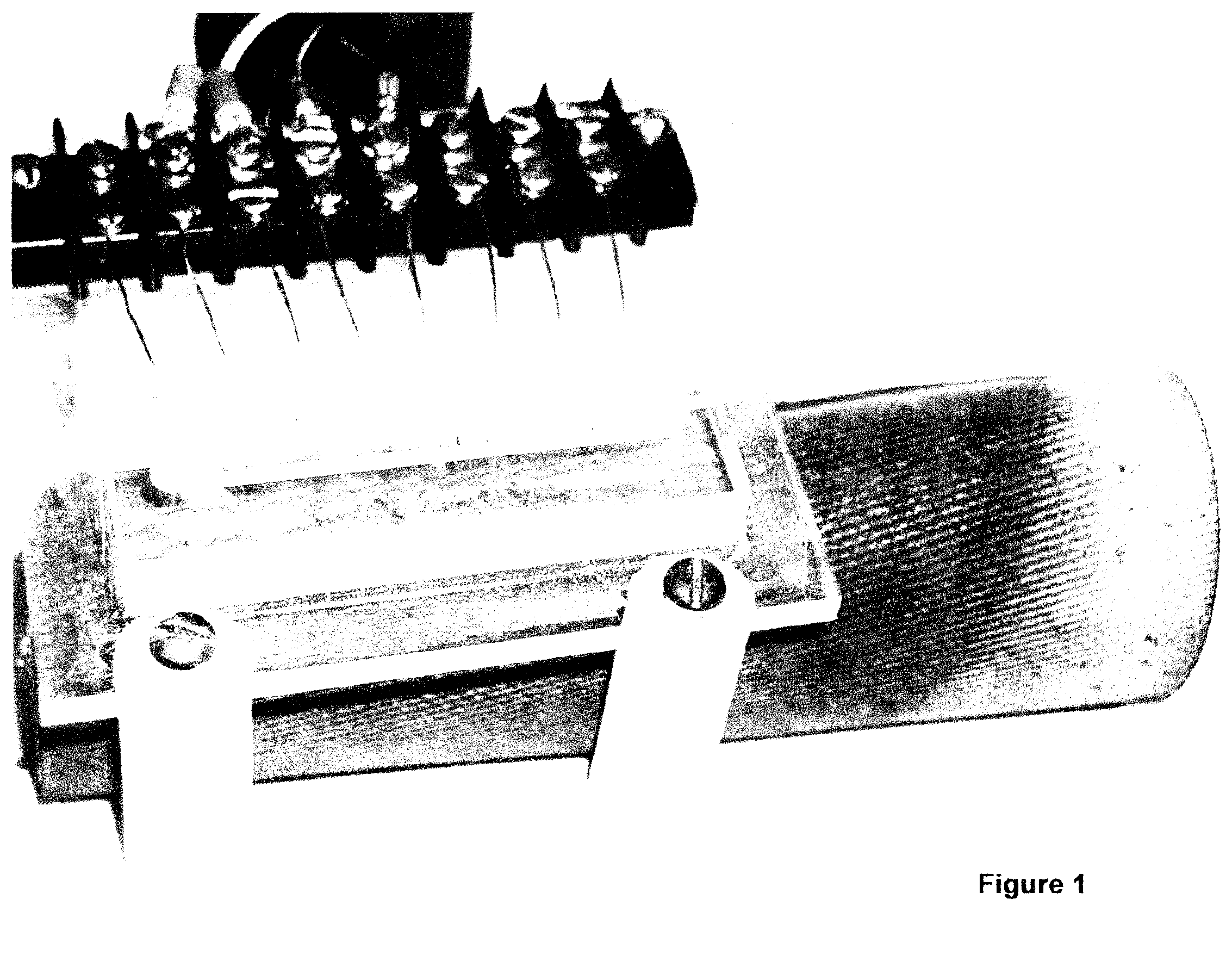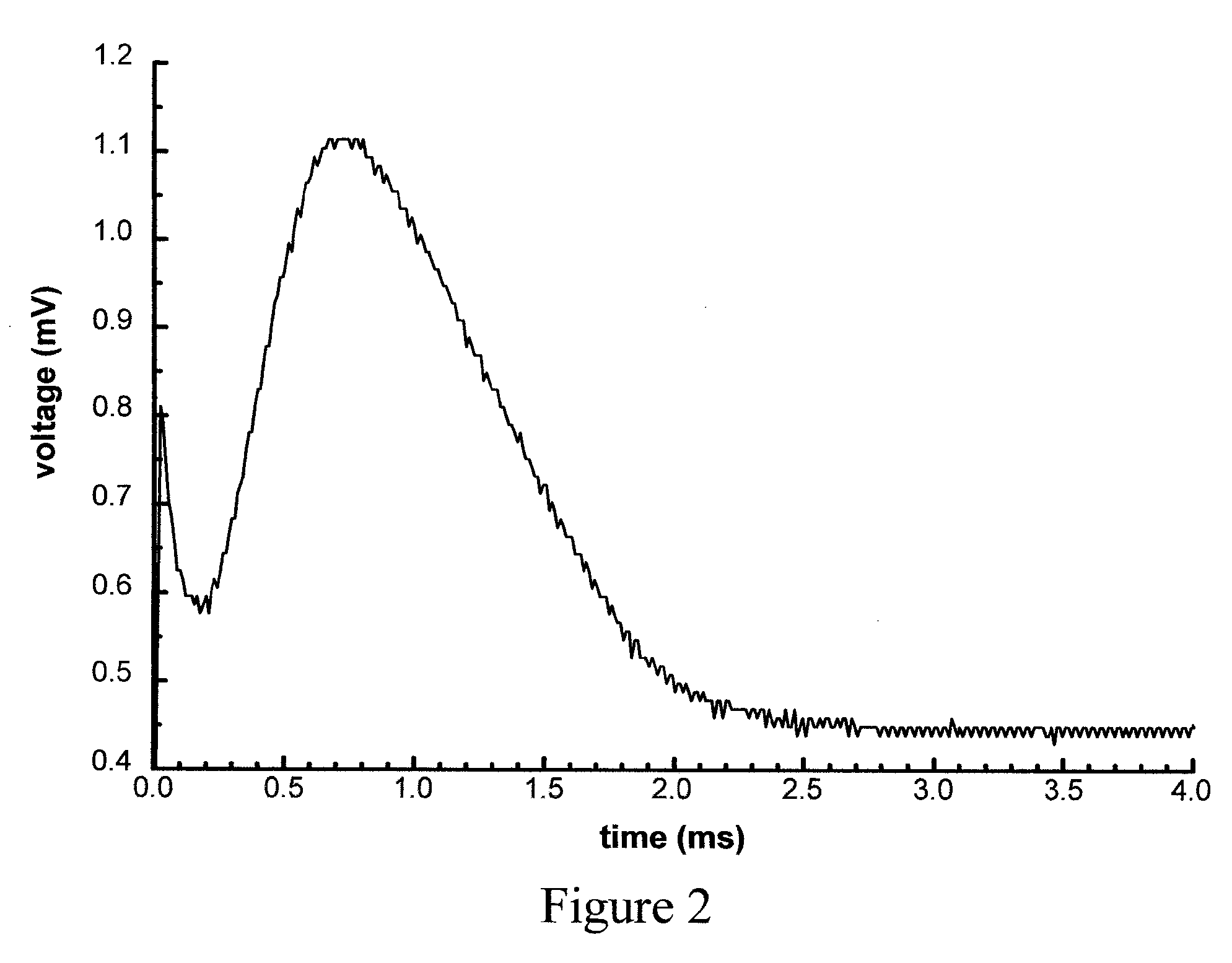Bio-Potential Activation of Artificial Muscles
a non-biological, electric activation technology, applied in the field of bio-potential activation of artificial muscles, can solve the problems of inability to live in the current form, deficiency, damage to muscles, etc., to achieve optimal movement and force, facilitate surgical methodology and technology, and correct muscular atrophy and dystrophy.
- Summary
- Abstract
- Description
- Claims
- Application Information
AI Technical Summary
Benefits of technology
Problems solved by technology
Method used
Image
Examples
Embodiment Construction
[0022] As discussed before, the present invention demonstrates how to stimulate and activate a non-biological muscle such as an ionic polymeric metal composite (IPMC) electro-active artificial muscle with the biological action potential generated by a mammalian nerve such as a sciatic nerve. The invention further presents parameters to generate optimal movement and force in artificial muscle due to the application of a nerve action potential. In order to fully describe the present invention in connection with such nerve action potential activation of non-biological artificial muscles, one should recall the review presented in the previous background section on biological muscles, how they are activated, and what role the nerve action potential plays in their activation. As discussed before, biological muscle contraction begins when an electrical signal is generated from somewhere in the central nervous system, either as a voluntary activity from the brain or as a reflex activity fro...
PUM
 Login to View More
Login to View More Abstract
Description
Claims
Application Information
 Login to View More
Login to View More - R&D
- Intellectual Property
- Life Sciences
- Materials
- Tech Scout
- Unparalleled Data Quality
- Higher Quality Content
- 60% Fewer Hallucinations
Browse by: Latest US Patents, China's latest patents, Technical Efficacy Thesaurus, Application Domain, Technology Topic, Popular Technical Reports.
© 2025 PatSnap. All rights reserved.Legal|Privacy policy|Modern Slavery Act Transparency Statement|Sitemap|About US| Contact US: help@patsnap.com



